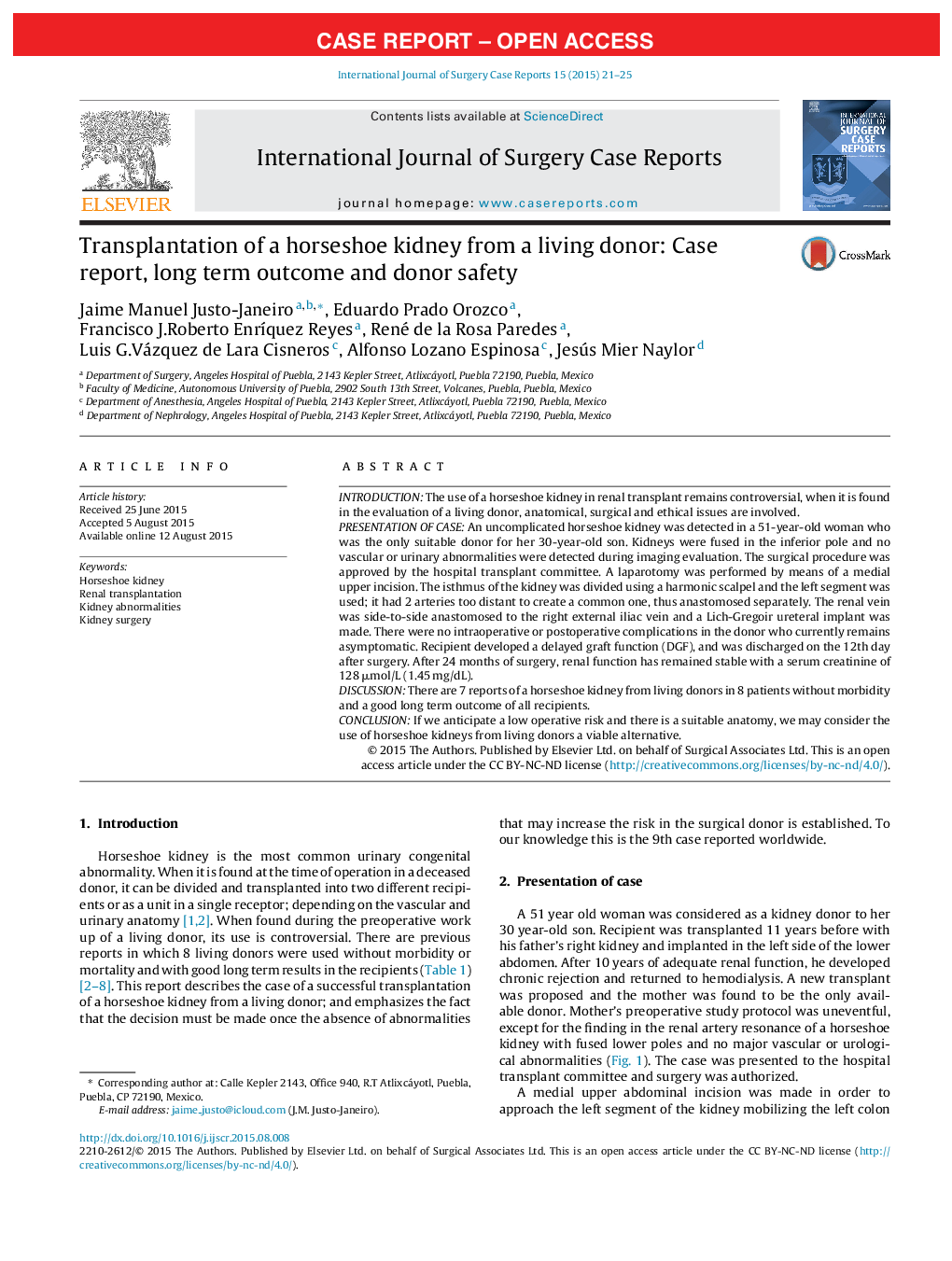| Article ID | Journal | Published Year | Pages | File Type |
|---|---|---|---|---|
| 4288805 | International Journal of Surgery Case Reports | 2015 | 5 Pages |
•Horseshoe kidney is the most common urinary congenital abnormality.•We describe a successful transplantation of a horseshoe kidney from a living donor.•We emphasized the absence of other abnormalities and establish a low surgical risk.•Good long term donor and recipient́s outcomes have been described.
IntroductionThe use of a horseshoe kidney in renal transplant remains controversial, when it is found in the evaluation of a living donor, anatomical, surgical and ethical issues are involved.Presentation of CaseAn uncomplicated horseshoe kidney was detected in a 51-year-old woman who was the only suitable donor for her 30-year-old son. Kidneys were fused in the inferior pole and no vascular or urinary abnormalities were detected during imaging evaluation. The surgical procedure was approved by the hospital transplant committee. A laparotomy was performed by means of a medial upper incision. The isthmus of the kidney was divided using a harmonic scalpel and the left segment was used; it had 2 arteries too distant to create a common one, thus anastomosed separately. The renal vein was side-to-side anastomosed to the right external iliac vein and a Lich-Gregoir ureteral implant was made. There were no intraoperative or postoperative complications in the donor who currently remains asymptomatic. Recipient developed a delayed graft function (DGF), and was discharged on the 12th day after surgery. After 24 months of surgery, renal function has remained stable with a serum creatinine of 128 μmol/L (1.45 mg/dL).DiscussionThere are 7 reports of a horseshoe kidney from living donors in 8 patients without morbidity and a good long term outcome of all recipients.ConclusionIf we anticipate a low operative risk and there is a suitable anatomy, we may consider the use of horseshoe kidneys from living donors a viable alternative.
